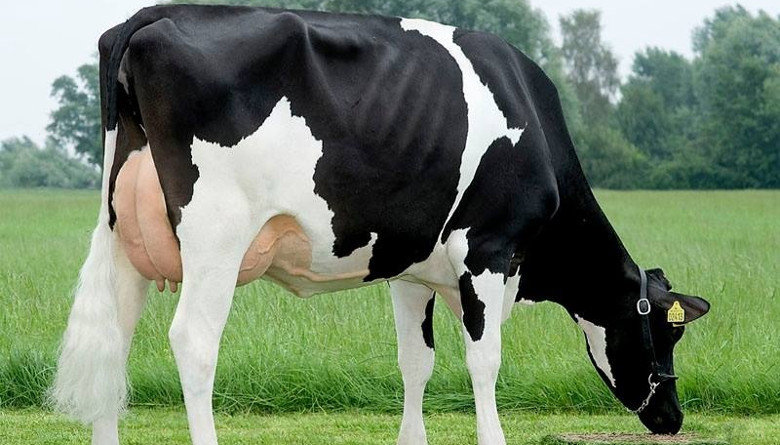Efecto de la tiamina protegida en rumen sobre la concentración sanguínea de beta hidroxibutirato en vacas Holstein posparto: un estudio piloto
DOI:
https://doi.org/10.19137/cienvet202224106Palabras clave:
cetosis, beta hidroxibutirato, Holstein, posparto, ganado lecheroResumen
El desarrollo de un producto de sobrepaso del rumen que contenga tiamina podría ser una alternativa valiosa para la prevención de la cetosis en el ganado lechero. El objetivo de este estudio piloto fue determinar los efectos de una tiamina protegida de sobrepaso del rumen (RPT) sobre el beta hidroxibutirato (BHB) en sangre en vacas Holstein posparto. El estudio se realizó en un hato lechero con 650 vacas, asignadas aleatoriamente a un grupo de tratamiento (T, n = 20) que recibió diariamente durante 10 días después del parto, por vía oral, 60 g de tiamina protegida de sobrepaso del rumen y un grupo de control (C, n = 20), recibiendo un placebo. Se recolectaron muestras de sangre los días 3, 7 y 10 posparto. En el día 3 y 10 después del parto, los niveles de BHB fueron similares entre los grupos; sin embargo, en el día 7, las concentraciones de BHB fueron diferentes (0.57 y 0.83 mmol / L para T y C respectivamente, P ≤0.05). Se concluye que un producto oral de tiamina protegido en el rumen disminuyó las concentraciones sanguíneas de BHB durante los primeros 10 días posparto. En base a este estudio piloto, este aditivo merece una mayor investigación para dilucidar su mecanismo potencial de acción fisiológica como agente preventivo de la cetosis.
Descargas
Citas
2. Melendez P Risco CA. In Reference Module in Food Sciences. Reproduction, Events and Management Pregnancy: Periparturient Disorders. 1st ed.; Geoffrey, S., Ed.; Elsevier. Academic Press, 2016; https://doi.org/10.1016/B978-0-08-100596-5.01048-9
3. Liang D, Arnold LM, Stowe CJ, Harmon RJ, Bewley JM. Estimating US dairy clinical disease costs with a stochastic simulation model. J Dairy Sci 2017, 100, 1472-1486.
4. Melendez P, Risco CA. Management of transition cows to optimize reproductive efficiency in dairy herds. Vet Cl North Am Food Anim Prac 2005, 21, 485-501.
5. Ospina PA, Nydam DV, Stokol T, Overton TR. Association between the proportion of sampled transition cows with increased nonesterified fatty acids and beta-hydroxybutyrate and disease incidence, pregnancy rate, and milk production at the herd level. J Dairy Sci 2010, 93, 3595-3601.
6. McArt JAA, Nydam DV, Oetzel GR. Epidemiology of subclinical ketosis in early lactation dairy cattle. J Dairy Sci 2012, 95, 5056-5066.
7. Ospina PA, McArt JAA, Overton TR, Stokol T, Nydam DV. Using nonesterified fatty acids and β-hydroxybutyrate concentrations during the transition period for herd-level monitoring of increased risk of disease and decreased reproductive and milking performance. Vet Clin North Am. Food Anim Pract 2013, 29, 387-412.
8. Nelson DL, Cox MM. Lehninger Principles of Biochemistry. 7th ed.; Macmillan Learning, 300 American Metro Blvd, Suite 140, Hamilton, NJ 08619, USA, 2017; pp. 601-630.
9. Boletín Agro-Meteorológico Decadal, Santiago: Chile. Available online: http://www.meteochile.gob.cl/PortalDMC-web/index.xhtml
10. Van Amburgh ME, Collao-Saenz E, Higgs R, Ross DA. Recktenwald, E.B.; Raffrenato, E.; Chase, L.E.; Overton, T.R.; Mills JK, Foskolos A. The Cornell Net Carbohydrate and Protein System: Updates to the model and evaluation of version 6.5. J Dairy Sci 2015,
98, 6361-6380.
11. Tatone EH, Gordon JL, Hubbs J, LeBlanc SJ, DeVries TJ, Duffield TF. A systematic review and meta-analysis of the diagnostic accuracy of point-of-care tests for the detection of hyperketonemia in dairy cows. Prev Vet Med 2016, 130, 18-32.
12. Ferguson JD, Galligan DT, Thomsen N. Principal descriptors of body condition score in Holstein cows. J Dairy Sci 1994, 77, 2695-2703.
13. SAS INSTITUTE. SAS/STAT Software: Change and enhancements through release 9.4 for Windows. SAS Institute Inc., Cary, NC, USA. 2013.
14. Littell RC, Henry PR, Ammerman CB. Statistical analysis of repeated measures data using SAS procedures. J Anim Sci 1998, 76, 1216-1231.
15. Overton TR, McArt JAA, Nydam DV. A 100-Year Review: Metabolic health indicators and management of dairy cattle. J Dairy Sci 2017, 100, 10398-10417.
16. Clark JA, Burny I, Sarnaik AP, Audhya TK. Acute thiamine deficiency in diabetic ketoacidosis: Diagnosis and management. Pediatr Crit Care Med 2006, 7, 595-599.
17. Rosner EA, Strezlecki KD, Clark JA, Lieh-Lai M. Low thiamine levels in children with type 1 diabetes and diabetic ketoacidosis: a pilot study. Pediatr Crit Care Med 2015, 16, 114-118.
18. Shaver RD, Bal MA. Effect of dietary thiamin supplementation on milk production by dairy cows. J Dairy Sci 2000, 83, 2335-2340.
19. Kholif AM Hanafy MA, El-Shewy A, Gawad MHA, Farahat ESA. Effect of supplementing rations with thiamin and/or sodium bicarbonate on milk yield and composition of lactating cows. Egyptian J Nut Feeds 2009, 12, 187-195.
20. Girard CL, Graulet B. Methods and approaches to estimate B vitamin status in dairy cows: Knowledge gaps and advances. Methods 2021, 186, 52-58
21. Pan X, Nan X, Yang L, Jiang L, Xiong B. Thiamine status, metabolism and application in dairy cows: a review. Br J Nutr 2018, 120, 491-499.

Descargas
Publicado
Número
Sección
Licencia
Al momento de enviar sus contribuciones, los colaboradores deberán declarar , de manera fehaciente, que poseen el permiso del archivo o repositorio donde se obtuvieron los documentos que se anexan al trabajo, cualquiera sea su formato (manuscritos inéditos, imágenes, archivos audiovisuales, etc.), permiso que los autoriza a publicarlos y reproducirlos, liberando a la revista y sus editores de toda responsabilidad o reclamo de terceros , los autores deben adherir a la licencia Creative Commons denominada “Atribución - No Comercial CC BY-NC-SA”, mediante la cual el autor permite copiar, reproducir, distribuir, comunicar públicamente la obra y generar obras derivadas, siempre y cuando se cite y reconozca al autor original. No se permite, sin embargo, utilizar la obra con fines comerciales.







.jpg)

4.png)


7.png)






